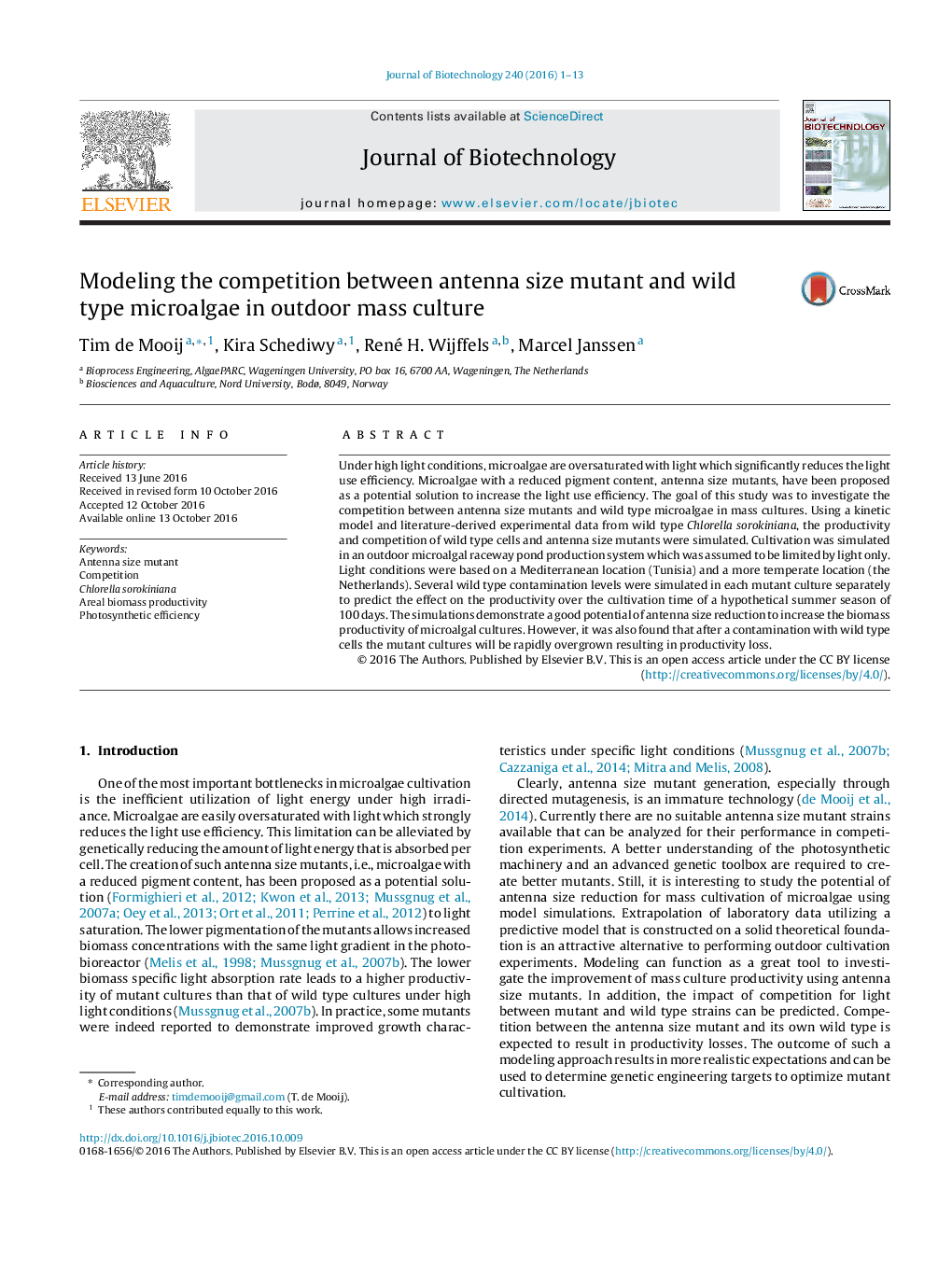| Article ID | Journal | Published Year | Pages | File Type |
|---|---|---|---|---|
| 6452112 | Journal of Biotechnology | 2016 | 13 Pages |
â¢The efficacy of antenna reduction is limited to locations of high irradiance.â¢A large antenna size reduction (80%) was required for maximal culture productivity.â¢Reduction of antenna size reduces strain competiveness.â¢Outcompetition was faster for smaller antenna size and higher contamination levels.â¢Improved competitiveness is required for stable cultivation of mutant cultures.
Under high light conditions, microalgae are oversaturated with light which significantly reduces the light use efficiency. Microalgae with a reduced pigment content, antenna size mutants, have been proposed as a potential solution to increase the light use efficiency. The goal of this study was to investigate the competition between antenna size mutants and wild type microalgae in mass cultures. Using a kinetic model and literature-derived experimental data from wild type Chlorella sorokiniana, the productivity and competition of wild type cells and antenna size mutants were simulated. Cultivation was simulated in an outdoor microalgal raceway pond production system which was assumed to be limited by light only. Light conditions were based on a Mediterranean location (Tunisia) and a more temperate location (the Netherlands). Several wild type contamination levels were simulated in each mutant culture separately to predict the effect on the productivity over the cultivation time of a hypothetical summer season of 100Â days. The simulations demonstrate a good potential of antenna size reduction to increase the biomass productivity of microalgal cultures. However, it was also found that after a contamination with wild type cells the mutant cultures will be rapidly overgrown resulting in productivity loss.
